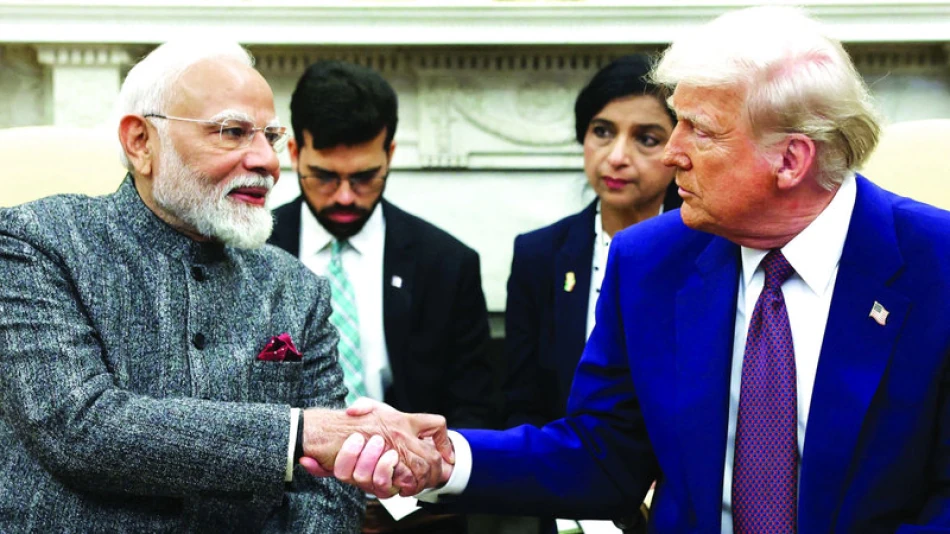
India-US Temporary Trade Deal Hopes Fade: Latest Negotiations Stall Amid Ongoing Disputes
US-India Trade Deal Faces August Deadline as Key Disputes Remain Unresolved
Prospects for a temporary trade agreement between India and the United States are rapidly diminishing as negotiations stall over agricultural tariffs and dairy market access, with Washington's August 1 deadline fast approaching. The failure to bridge fundamental disagreements on farm products and industrial goods threatens to trigger punitive US tariffs on Indian exports, potentially escalating tensions between two of the world's largest economies.
Trump's Tariff Threat Looms Large
The urgency stems from President Donald Trump's April threat to impose 26% tariffs on Indian imports—a move that would significantly impact India's $77 billion annual exports to the US. Trump temporarily suspended the tariff implementation to allow for negotiations, but that reprieve expires on August 1, 2025, creating a hard deadline that negotiators appear unlikely to meet.
India's chief negotiator Rajesh Agrawal recently returned from Washington after a fifth round of talks with little to show for the effort. According to government sources, "reaching an interim agreement before August 1 seems difficult, despite ongoing remote discussions."
Core Disputes Blocking Progress
Agricultural and Dairy Market Access
The primary sticking point remains India's steadfast refusal to liberalize its agriculture and dairy sectors—politically sensitive areas that support hundreds of millions of Indian farmers and rural workers. New Delhi views these sectors as crucial for food security and rural employment, making concessions extremely difficult for Prime Minister Narendra Modi's government.
Industrial Tariffs on Steel and Automobiles
Meanwhile, Washington has rejected India's demands to reduce high tariffs on steel, aluminum, and automotive exports. These sectors represent significant Indian manufacturing capabilities and export potential, particularly as the country seeks to position itself as an alternative to China in global supply chains.
Strategic Context and Market Implications
The negotiation deadlock reflects broader challenges in US-India economic relations, despite growing strategic partnership in areas like defense and technology. Unlike smaller economies that have successfully negotiated limited trade deals with the US, India's size and complexity make quick agreements more difficult.
For investors and businesses, the uncertainty creates planning challenges. Indian exporters in textiles, pharmaceuticals, and IT services—sectors that could face retaliatory measures—are particularly vulnerable. US agricultural exporters, meanwhile, remain locked out of India's massive but protected domestic market.
Looking Beyond August: Comprehensive Deal Ambitions
Indian officials maintain hope for a more comprehensive agreement by September or October, aligning with commitments made during Modi and Trump's February meeting. This timeline suggests both sides may be willing to accept short-term friction in pursuit of a broader, more substantive deal.
The strategy carries risks, however. If August passes without agreement, Trump may feel compelled to implement threatened tariffs to maintain credibility, potentially creating new obstacles to future negotiations and setting a confrontational tone that could persist beyond the immediate dispute.
A US delegation is expected to visit New Delhi soon to continue negotiations, but the fundamental disagreements suggest that any breakthrough will require significant political compromise from both sides—something that appears increasingly unlikely before the August deadline.
Most Viewed News

 Sara Khaled
Sara Khaled






